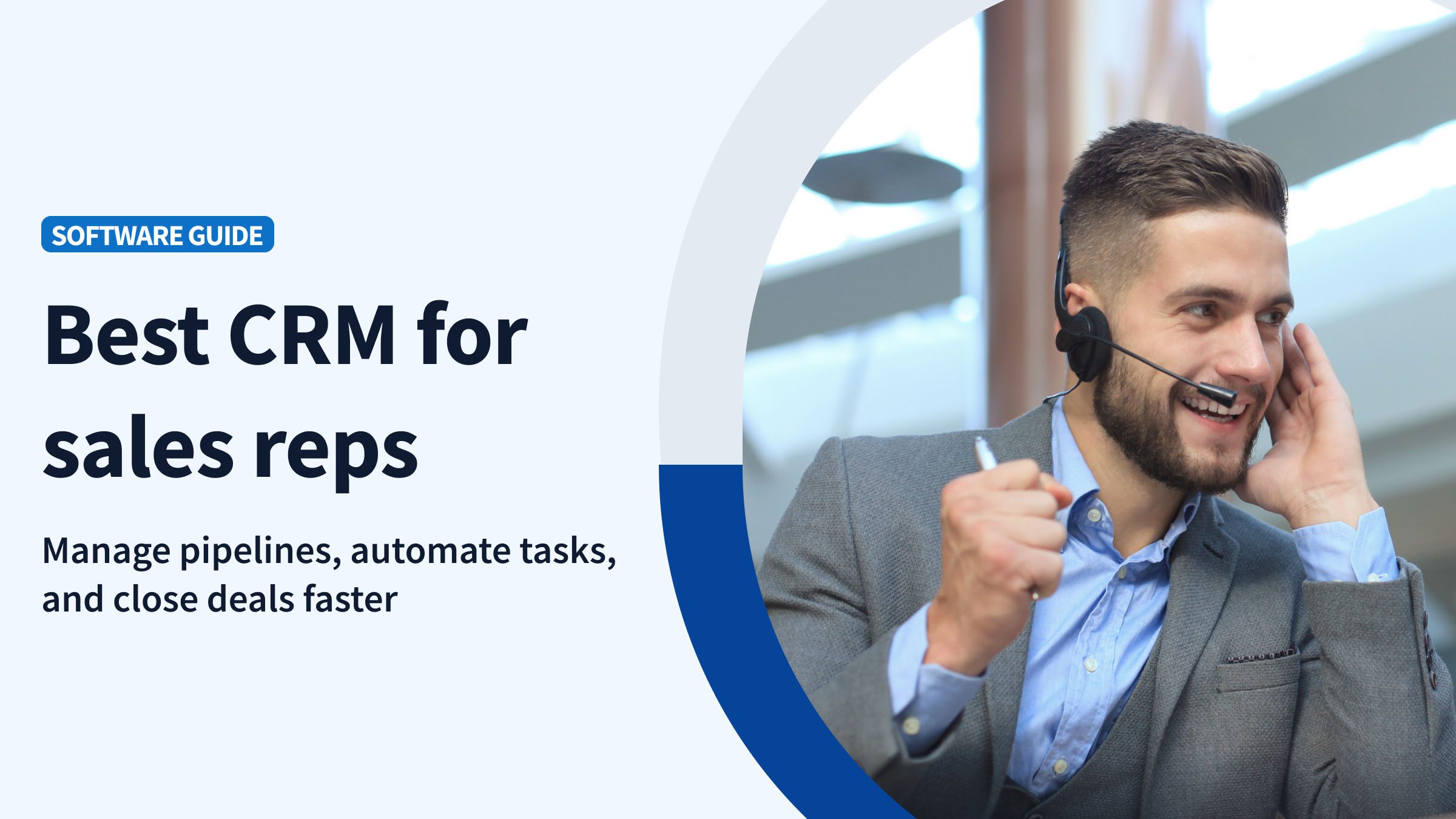If you found yourself in a room with 100 people, how many could you convince to buy your product? Your ability to turn leads into paying customers is the backbone of one of the most important key performance indicators (KPIs) in business.
So, what is the metric you should use to track this, and how do you calculate it? Keep reading to learn everything you need to know about your lead-to-customer conversion rate.
What is lead-to-customer conversion rate?
A lead-to-customer conversion rate indicates the percentage of leads that turn into paying customers. In simple terms, it measures the number of people expressing interest in your product who — through visiting your website or signing up for a trial, for instance — end up making a purchase.
How to calculate lead-to-customer conversion rate
To calculate your lead-to-customer conversion rate, you will need two key figures:
- The number of leads generated.
- The number of those leads who converted to a paying customer.
These can represent your entire business, or you can break them down by things like marketing channel, product segment, or customer demographics to get more detailed information.
Lead conversion rate formula
The formula looks like this:
Lead-to-customer conversion rate = (Number of customers / Number of leads) * 100%
Take the number of leads that converted to a paid customer, divide that by the total number of leads generated, and then multiply this answer by 100 in order to get your answer as a percentage.
Example case
For example, if your business generated 500 leads and 50 became customers, the conversion rate would be:
(50 / 500) * 100% = 10%
Why should you track your lead conversion rate?
Some marketing and sales teams forget that the ultimate goal of their efforts is to secure revenue, and instead focus on generating as many leads as possible. If those leads aren’t progressing through the sales funnel, they quickly become useless to you.
Tracking your lead conversion rate is important for several reasons:
See how your marketing and sales efforts perform
If Marketing generates leads but Sales can’t close them, there’s an obvious mismatch. Your conversion rate is a key indicator of how effectively different teams collaborate, and whether there needs to be an adjustment.
Maximize your return on investment (ROI)
Monitoring your conversion rate helps identify the most effective marketing channels, allowing you to allocate your budget wisely and enhance ROI.
Decrease your customer acquisition cost (CAC)
Getting customers is great — but they can’t be too costly. A high conversion rate means more customers per dollar spent on lead acquisition. It’s essential to reduce your cost of acquiring customers while maintaining a strong conversion rate for efficient business growth.
Identify gaps in your sales pipeline
You can use your conversion rate to help identify where you need to improve your sales funnel. This helps you pinpoint where leads are falling through the cracks and informs your strategy.
Inform your goals
When developing new marketing and sales strategies, your lead-to-customer conversion rate is often a “North Star metric” — one that aligns all efforts cross-departmentally.
Other helpful lead conversion metrics
While your lead-to-customer conversion rate provides critical information, there are other insightful metrics that you should be aware of:
Lead-to-opportunity conversion rate
Your lead-to-opportunity conversions track how many leads become sales opportunities. This conversion rate here helps you understand how well your team is qualifying leads, and can often be thought of as the leads that Marketing gives to Sales.
Lead-to-sale conversion rate
This metric gives you a strategic view of your overall sales performance by measuring how many actual sales you generated. One lead could result in multiple sales, making it a different metric than lead-to-customer.
Lead-to-customer ratio
This ratio is similar to the lead-to-sale conversion rate and often used to identify the balance between lead generation and customer acquisition. Unlike lead-to-sale conversions, one lead can only result in one customer.
Cost per conversion
This is the end-to-end total cost of acquiring one customer, which helps you understand the financial impact of acquiring each lead.
Conversion ROI
If your costs are too high, a conversion may not even be worth the resources you’ve spent to acquire it. Conversion ROI lets you see how valuable the lead-to-customer process is.
Lead value
Your lead value determines the monetary value of each lead based on your average customer value and conversion rate.
Time to conversion
This metric tracks the time it takes for a lead to convert into a paying customer.
Sales cycle length
Similarly, sales cycle length measures the total time it takes from initial contact to closing a sale. This is more of an average or approximation than a specific and exact time-to-conversion metric.
Abandonment rate
This helps e-commerce businesses track when shoppers leave their carts before buying, offering key insights for retargeting campaigns.
Average conversion rates by industry
Knowing the average conversion rates for your field helps you set realistic goals. For instance, the finance and education sectors often see 5-10%, while e-commerce and retail can be significantly lower.
| Industry | Average Conversion Rate |
| E-commerce | 2.0% |
| Real Estate | 4.0% |
| Technology (Software) | 7.0% |
| Financial Services | 5.0% |
| Healthcare | 8.0% |
| Retail | 3.0% |
| Automotive | 6.0% |
| Travel and Hospitality | 4.5% |
| Education | 8.0% |
| Professional Services | 10.0% |
Source: Alore
Stages of lead conversion
A sales pipeline consists of several stages guiding a lead from initial contact to final sale. Here’s a general framework common to most businesses:
1. Lead generation
Start by pinpointing potential customers and gathering their interests and demographics. Effective lead generation methods include SEO, content marketing, and paid ads to drive relevant traffic to your site.
2. Lead qualification
Determine if your product or service suits your potential customer’s needs, and whether they can afford (and have the authority) to purchase. Use lead scoring to prioritize high-quality leads likely to convert.
3. Lead nurturing
Personalize your communication to keep leads engaged. Build trust by addressing pain points and overcoming objections, setting the stage for conversion.
4. Close the sale
When the lead is ready to buy, finalize the process by presenting quotes, negotiating terms, and completing the transaction. You should also handle any objections that come from each prospect.
5. Follow-up and retention
After closing the sale, make sure you follow up to deliver customer satisfaction. Happy customers are more likely to become repeat buyers or refer your business through word of mouth to others.
6 strategies to improve your lead-to-customer conversion rate
Improving your conversion rate requires intentional efforts across various parts of your sales process. Here are six proven strategies:
1. Build and optimize your website
Produce diverse, high-quality content such as text, videos, and infographics. Optimize your site for SEO with keyword research and include features like live chat or smart forms to capture leads efficiently. See an example of a lead capture form below.

2. Employ an advertising strategy
Test different advertising platforms and formats like pay-per-click (PPC) and social media ads. Use clear, compelling calls-to-action (CTAs) to encourage conversions.
3. Invest in email marketing
Automate campaigns with personalization and segment your email list to target specific audiences for greater impact. Use tracking codes to evaluate campaign success.
4. Talk to your existing customers
Don’t make decisions solely on numbers. Ask your customers:
- What they like about the product.
- New ways they’ve used it.
- Any issues they have.
Leverage this feedback to refine your marketing strategies, targeting new customers with a more specific experience.
5. Build a community
Boost conversion rates by engaging with your audience both online and offline. Social media and online channels target audiences effectively, while real-world events offer personal connections. You can even host your own events that fit within your industry or target audience.
6. Leverage technology
Research and try out different dedicated tools to make running your business easier. Customer relationship management (CRM) tools like Method can significantly improve your sales cycle. For example, you can increase lead conversion by:
- Tracking interactions.
- Automating follow-ups.
- Managing relationships.
If you’re a QuickBooks or Xero user, Method is a no-brainer to drive growth and profitability without spending too much extra time or money to achieve results. Check out some of the things Method can do for your business in the video below.
Wrap-up: Improve your lead-to-customer conversion rate
Tracking your lead-to-customer conversion rate will show you exactly where things are going right and where things are going wrong. To calculate it for your business, you need your number of leads and number of paying customers in a given time period. From there, just divide your leads by your customers and multiply by 100%.
Ready to build up your lead-to-customer conversions? With Method, you can:
- Centralize your lead management.
- Automate follow-ups.
- Keep your sales pipeline flowing smoothly.
The result? No more missed opportunities to turn leads into customers.
Try Method for free today.
Lead-to-customer conversion rate FAQs
What’s the difference between an inquiry and a lead?
An inquiry is specific expressed interest, like when a potential customer asks for more information about your product or service. A lead, however, is someone who meets specific criteria that indicates they could purchase your product. For example, maybe they’ve given you their contact details by signing up for your email newsletter.
What is a good lead conversion rate?
A good lead conversion rate typically ranges between 2% and 10%, but varies significantly across industries.
How do I find a balance between lead quantity and lead quality?
Striking a balance between lead quantity and quality involves focusing on generating high-quality leads with a higher conversion potential, rather than solely increasing lead volume. It’s a good idea to implement lead scoring to prioritize leads based on their likelihood to purchase.
What are SQLs and MQLs?
Sales-qualified leads (SQLs) are vetted by your sales team and ready for direct sales engagement. Marketing-qualified leads (MQLs) have shown interest in your offering through actions like content downloads or webinar attendance but require further nurturing.





